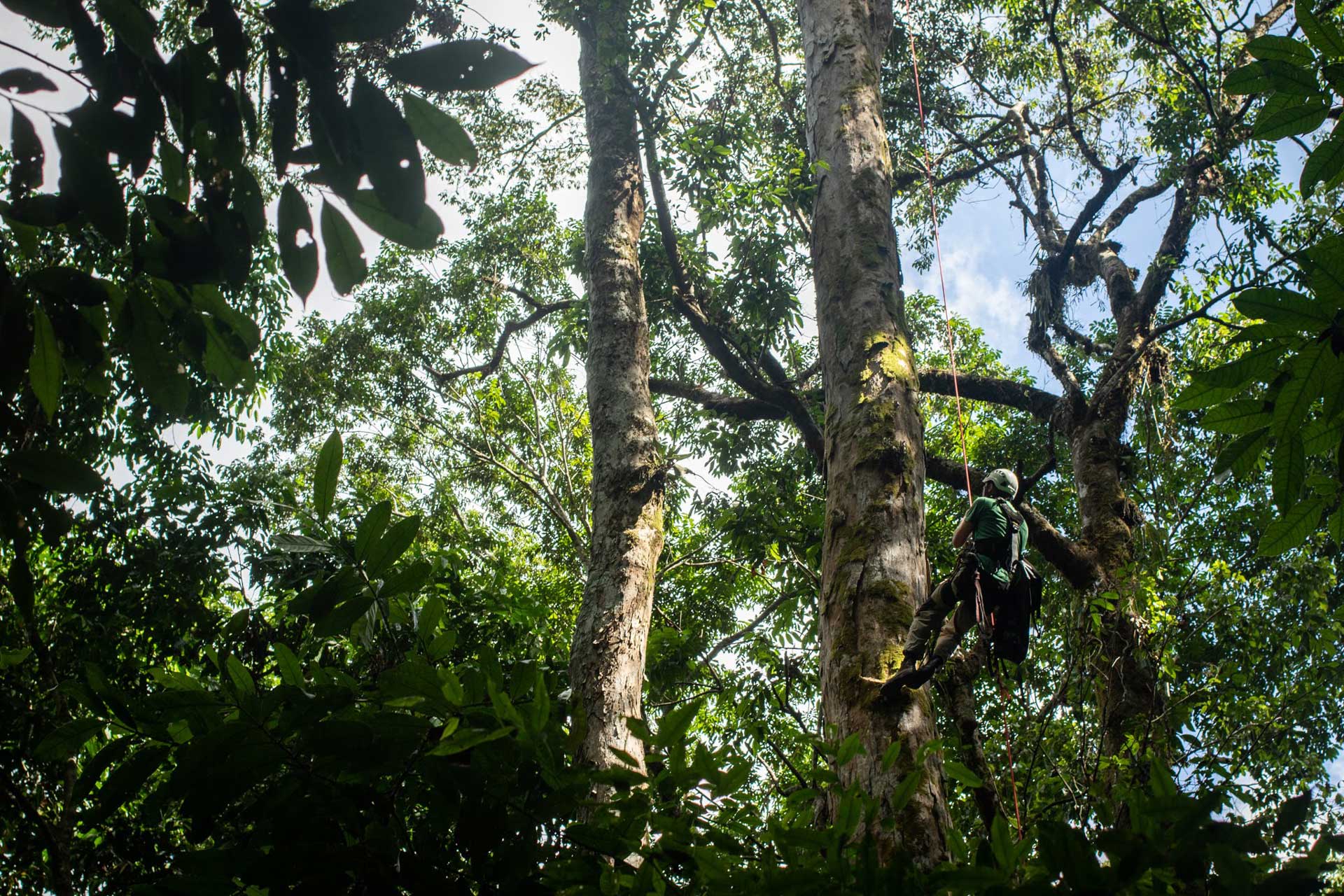
Enterolobium cyclocarpum
Enterolobium cyclocarpum
Guanacaste, Jarina, Soró
Audio
English Audio
Audio en Español
Plant Story
As apparent from its name, this tree grows throughout the Guanacaste Province of Costa Rica, where it prefers seasonal, deciduous forests. However, the species has also been recorded on the Osa Peninsula, where it has been cultivated. Often recognized because of its spectacular. umbrella-shaped crown and very small, blade-like leaves, this tree grows white flowers pollinated by insects such as bees and ear-shaped, brown fruits. The inside of the fruit smells strongly and is home to the tree’s brown, ornate seeds, which are often used for crafts. Its high-quality wood is used for joinery and construction. This species is distributed from Mexico to Brazil.
Historia de la planta
Este famoso árbol es conocido al igual que la Provincia de Guanacaste de Costa Rica, es más común en bosques estacionales, deciduos, sin embargo también se conoce en la Península de Osa, muchas veces plantado. Es reconocido por su espectacular copa en forma de sombrilla y láminas foliares muy pequeñas. Las flores son blancas, polinizadas por insectos como abejas, los frutos tienen forma de oreja, son cafés y por dentro tienen un olor penetrante, las semillas son café, bastante llamativas y usadas para artesanías. La madera es de buena calidad y es utilizada para ebanistería y construcción. Se conoce desde México hasta Brasil.
Plant details
Plant Information
Botanic Name:
Enterolobium cyclocarpum
Common name(s):
Guanacaste, Guanacaste, Jarina, Soró
Family
Fabaceae
Phenology
Flowering Months:
January, February, March
Fruiting Months:
January, February, March, April, May
Conservation
IUCN category:
Least concern / Menor preocupación (LC)
CITES:
Interesting Links
Plant Locations
Guanacaste
Plant details
Audio
English Audio
Audio en Español
Story / Historia
Plant Story
As apparent from its name, this tree grows throughout the Guanacaste Province of Costa Rica, where it prefers seasonal, deciduous forests. However, the species has also been recorded on the Osa Peninsula, where it has been cultivated. Often recognized because of its spectacular. umbrella-shaped crown and very small, blade-like leaves, this tree grows white flowers pollinated by insects such as bees and ear-shaped, brown fruits. The inside of the fruit smells strongly and is home to the tree’s brown, ornate seeds, which are often used for crafts. Its high-quality wood is used for joinery and construction. This species is distributed from Mexico to Brazil.
Historia de la planta
Este famoso árbol es conocido al igual que la Provincia de Guanacaste de Costa Rica, es más común en bosques estacionales, deciduos, sin embargo también se conoce en la Península de Osa, muchas veces plantado. Es reconocido por su espectacular copa en forma de sombrilla y láminas foliares muy pequeñas. Las flores son blancas, polinizadas por insectos como abejas, los frutos tienen forma de oreja, son cafés y por dentro tienen un olor penetrante, las semillas son café, bastante llamativas y usadas para artesanías. La madera es de buena calidad y es utilizada para ebanistería y construcción. Se conoce desde México hasta Brasil.
Plant Information
Botanic Name
Enterolobium cyclocarpum
Common name(s)
Guanacaste, Jarina, Soró
Family
Fabaceae
Phenology
Flowering Months
January, February, March
Fruiting Monts
January, February, March, April, May
Conservation
IUCN category
Least concern / Menor preocupación (LC)
CITES
Interesting Links
Plant Locations
Post A Comment
You must be logged in to post a comment.







No Comments